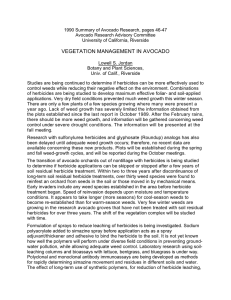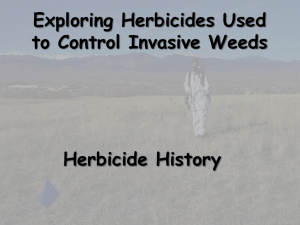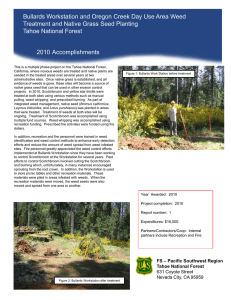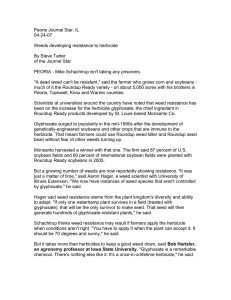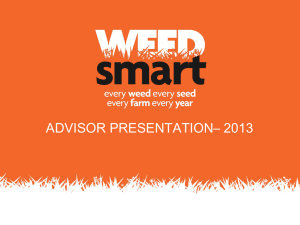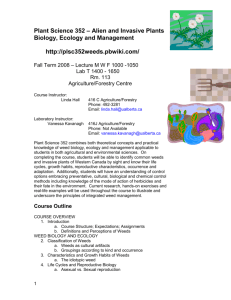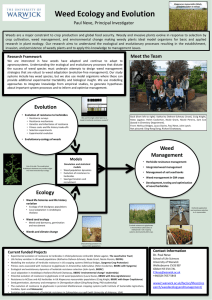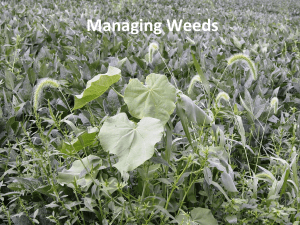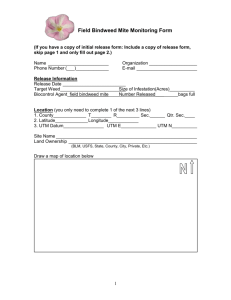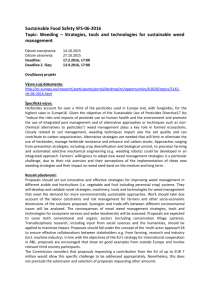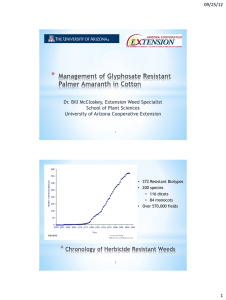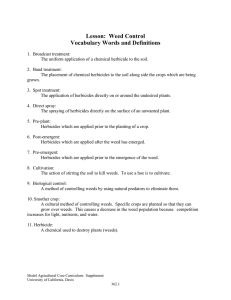Presentation 6 (part 2, slides 16 - 32)
advertisement
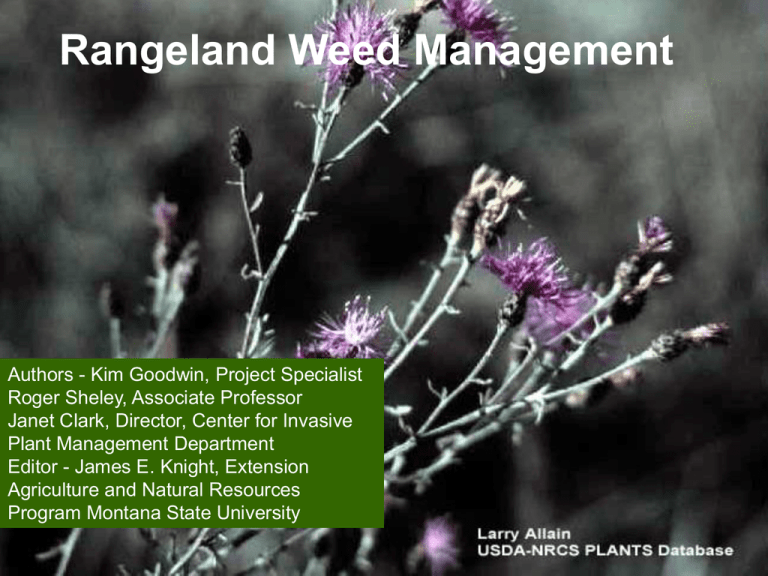
Rangeland Weed Management Authors - Kim Goodwin, Project Specialist Roger Sheley, Associate Professor Janet Clark, Director, Center for Invasive Plant Management Department Editor - James E. Knight, Extension Agriculture and Natural Resources Program Montana State University Part 2 This is the second half of the weeds PowerPoint presentation Integrated Weed Management Develop & maintain healthy, desired plant communities Variety of preventive strategies Large versus small weed infestations Prevention & early detection Prevention – most effective, least costly Limit weed dispersal Detect and eradicate early Re-vegetate when necessary Properly manage desired plants Limiting dispersal of weed seeds Certified weed-free gravel, seed mixes, forage, and mulch Clean undercarriage of vehicles Boots and clothing Livestock movement Detect early – pull, clip, bag, burn Eradicate Detecting & Eradicating Weed Introductions Early on Monitoring is crucial Develop a Monitoring plan Spring Summer Early Fall Eradicating small seed patches Newly established Small than 100 square feet Prioritize: low-density responds more quickly Document changes in patch size & density Flag or mark Frequent follow-up Managing Large Infestations Limit seed dispersal Requires use of many management methods Mechanical Chemical Cultural, and Biological Large Infestations, cont. Mowing effectiveness based upon: Time of growing season Biological characteristics of the target weed Large Infestations, cont. Chemical control - herbicides Eradicate Reduce weed vigor Long-term control – when healthy plant community is present Selecting the right herbicide The target weed Weed density Herbicide toxicity Herbicide degradation time Desired vegetation cover Soil attributes Proximity to water, and Environmental conditions. Time herbicide application Nonresidual herbicides: During seeding/rosette, Early bud, and Fall regrowth Soil-residual herbicides: Timing is less important Suggested Placement Depends upon the size of the infestation size – wide treatment Large size – perimeter treatment Moderate Cultural Control Promote growth & competitiveness of desired plants Re-vegetation Management of desired plants Grazing Management “Single-entry” Revegetation One late-fall field entry Cost-effective Yields reliable revegetation Cultural Control Grazing Domestic sheep Early bud stage of the weed Weaken the weeds Over time – effects underground reserves Eventually reducing stem densities Biological Control Insect biocontrols Remove viable fluids Defoliate Eat seeds Bore into roots, shoots, and stems Effective when integrated with other management strategies Monitoring & evaluation Periodic observation is necessary Does not need to be elaborate Photo monitoring Integrated Weed Management Plan Following a burn – weeds are likely Is revegetation necessary? Fall-dormant broadcast reseeding effort
